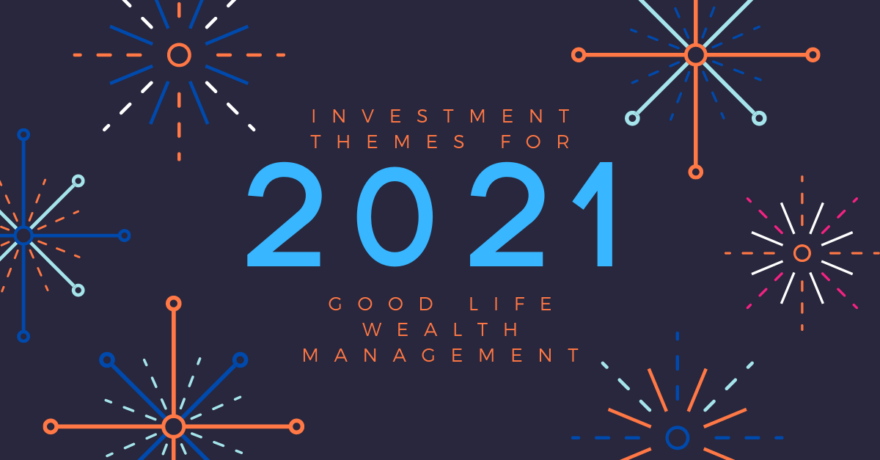With the market rising so fast in the past year, investors are wondering if the 10 year expected returns are still attractive. Are we in a speculative bubble? Other investors see certain stocks soaring and are driving prices even higher. Will recent returns continue? While it’s natural to fret about the future of the stock market, we suggest investors resist the temptation to try to time the market.
It may be helpful, however, to evaluate current valuations and consider how to weight a diversified, buy and hold portfolio. Based on present levels and projected growth, the Vanguard Capital Markets Model calculates the 10 year expected returns for various asset classes. We use this information both in our portfolio construction as well as in our financial planning calculations.
Expected returns today are lower than historical returns. The stock market has risen much faster than corporate earnings. Now, companies need to catch up with their stock valuations. Dividend Yields are lower than historical, as well as economic growth and inflation. All of these are components of projected future Equity returns.
Vanguard recently updated their 10 year expected returns, based on market levels on December 31, 2020. You can compare these figures to six months ago, when I last wrote about Vanguard’s estimates.
Vanguard’s 10 Year Expected Returns
- US Stocks: 3.0% to 5.0%
- International Stocks: 6.1% to 8.1%
- US Growth: -0.1% to 1.9%
- Value: 4.4% to 6.4%
- Large Cap: 2.9% to 4.9%
- Small Cap: 3.2% to 5.2%
- US REITs: 3.0% to 5.0%
- US Aggregate Bonds: 0.8% to 1.8%
- International Bonds: 0.6% to 1.6%
- Emerging Markets Bonds: 1.5% to 2.5%
These estimates are 10 year annualized projections and are not guaranteed. There will undoubtedly be down years and this is not meant to suggest returns over the next year or in the short-term. Investing involves risk of loss of capital. Source: Vanguard Market Perspectives, March 2021.
Key Takeaways
- 10 year expected returns are lower than historical returns. I have cautioned in the past about using historical returns in financial planning projections. We use projected returns. Based on the midpoint of Vanguard’s figures, a 60/40 portfolio with 30% US Stocks, 30% International Stocks, and 40% US Aggregate Bonds has a projected return of 3.85% a year. This may cause some investors to rethink their allocations.
- US Growth Stocks are overvalued. US Value is more attractive for a long-term investor today. Be careful of chasing 2020’s hot stocks! We have already built a sizeable position in Value stocks in our models.
- International Stocks are more attractive than US Stocks. Be diversified and don’t invest in just US companies. Presently, International Stocks make up 43% of the World Index. If you don’t have at least 43% of your equities in International, you have a Home Bias. This may have worked well in the past decade, but appears less likely to be the case for the next 10 years.
- US Small Cap may offer a diversification benefit to Large Cap. REITs on the other hand, have the same return profile as US Stocks, but are riskier (higher volatility). So, we are avoiding REITs in our models.
- Bonds and Cash serve primarily as portfolio defense today. They offer little return potential. Vanguard projects inflation will be 1.1% to 2.1% over the next 10 years. Bond and cash returns may be less than inflation, which means you are losing purchasing power. Still, fixed income offers some benefits to rebalance when things are volatile. On their own, bonds are not making much of a positive contribution to portfolio returns.
- Preferred Stocks, Convertible Bonds, and Emerging Markets Bonds offer an attractive return potential compared to expected returns on core categories like US Stocks or US Aggregate Bonds. We have expanded our Alternative holdings in 2020 and again in 2021. Read more: Investment Themes for 2021.
Stay Diversified, Don’t Speculate
While we do tilt portfolios towards areas of relative value, it is important to remain diversified. Don’t put all your eggs in the one basket with the highest expected return. There’s no guarantee that Vanguard’s projected returns will become reality. Regardless of short-term market movements, our investment strength comes from keeping costs low, using Index strategies, staying diversified, and tax-efficiency.
The stock volatility over the past 12 months has been remarkable. But, it’s not unprecedented, though. I remember the Tech Bubble in 1999 and the rebound 12 years ago, from March of 2009. Both of those created rampant speculation, which we see today in certain growth stocks, cryptocurrency, and in the options market. Have we not learned the painful lessons of previous day-traders and those who gambled on stocks? Recently, individual investors have been asking me about trading options, Penny Stocks, and day trading stocks with the money they have set aside for a house down payment in one year.
Even as Vanguard is lowering its 10 year expected returns, people are getting greedy, with the fear of missing out on their chance to get rich. They know someone who got lucky over the past year and made a great trade. The lesson from the past is that everyone is a genius in a Bull Market. You could do no wrong in the past year, as long as you did something. Things won’t always be that easy, and that’s why you need a plan. Please make your investment choices about the next 10 years, and not the next 10 hours or 10 days.













